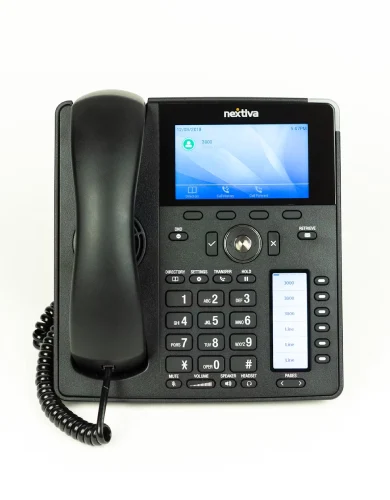Business broadband reliability
In the digital age, reliable broadband is key to business success; everything depends on a consistent, high-quality internet connection.
Being unable to access resources consistently reduces productivity, and your website being down only ushers your loyal customers into your competitor’s platforms.
But don’t fret; this article explains broadband reliability. You’ll learn how to measure it and the steps you need to take to improve it.
Contents:
- What is business broadband reliability?
- The key factors affecting reliability
- Enhancing broadband reliability
What is business broadband reliability?
It’s the consistency of your internet connection. It’s not about having the fastest speeds but about maintaining continuous connectivity at a decent level of performance.
Your business broadband provider defines the reliability of your connection in the Service Level Agreement (SLA) offered to your business.
Your business is responsible for monitoring your connection’s reliability, ensuring your provider complies with its commitment.
Key reliability indicators
While many indicators exist to describe reliability, those described in the Service Level Agreement (SLA) are usually enough to assess the consistency and quality of an internet connection.
Each SLA varies in scope. Some popular small business broadband deals typically guarantee “Uptime” and “Estimated Repair Times” only, while high-performance connections such as leased line broadband include a comprehensive suite of indicators including “Latency”, “Jitter”, and “Throughput”.
Typical indicators include:
- Uptime: Service availability (%).
- Latency: Time delay (ms).
- Throughput: Effective broadband speed (Mbps).
- Mean Time to Repair: The maximum time to resolve any service interruptions or issues caused by the provider (hours/minutes).
- Mean Time Between Failures: Time between network failures (hours).
Testing broadband reliability
To determine your reliability indicators, you can do a business broadband speed test that include metrics such as ‘ping’ (which describes latency).
Keeping a record of the speed tests will help you compile evidence in case your provider is breaching its SLA. You can issue a complaint and follow the process set up by Ofcom.
The key factors affecting reliability
The reliability of your business broadband connection depends on the following key factors:
| Factor | Explanation |
|---|---|
| Connection type | Tethered connections like fibre and cable are typically more reliable than wireless connections like 5G/4G and satellite. |
| Provider's service | Provider's ability to manage traffic during peak times, and to provide effective support to resolve issues. |
| Interference (Wireless) | Weather, physical obstructions, and electromagnetic interference can weaken wireless signals. |
| Broadband Equipment and Configuration | Quality and configuration of modems, routers, and other equipment impact connectivity. |
We look at each in more detail below.
Connection type
The type of broadband connection is usually the defining reliability factor because each has distinct speed, bandwidth, and latency characteristics.
For example, the superior bandwidth and speed of full fibre business broadband allow it to manage data traffic spikes much more easily than a SoGEA connection that relies on slower copper cables.
There is also a marked difference between fixed (tethered) connections, where data travels through protected cables, and wireless signals, which are easily affected by obstructions, interference, and weather conditions.
Nevertheless, the most reliable connection is usually achieved by combining multiple simultaneous connections, in a practice known as business broadband redundancy.
In this system, a business connects to multiple broadband deals supported by distinct providers simultaneously, ensuring that there is always an active connection, regardless of what is happening with the underlying networks.
Here are the main broadband connection types available in the UK with their latency and uptime:
| Broadband Technology | Typical Uptime (%) | Typical Latency Range (ms) | Specific Business Use Cases |
|---|---|---|---|
| Full Fibre | >99.9% | 4 - 8 | Critical applications, incl. VoIP, video conferencing, and real-time trading. |
| Mobile business broadband (4G/5G) | >99% | 5 - 50 | Remote work, backup connections, mobile operations, and field services |
| Standard business fibre optic broadband | >99.9% | 10-14 | General business use, including cloud services, email, and standard internet browsing |
| Cable Business Broadband | >99.9% | 12-15 | General office use, including streaming, downloads, and video calls |
| SoGEA/ADSL | 99.9% | 24 - 28 | Basic business internet, suitable for email, browsing, and light cloud services |
| LEO Satellite (Starlink/OneWeb) | >95% | 25-60 | Rural and remote business locations needing reliable internet with moderate latency |
| GEO Satellite (Traditional) | >90% | 500-800 | Connectivity in extremely remote areas where no other services are available, despite high latency |
💡 Virtually all business broadband packages in the UK offer >99% uptime, regardless of the connection type or provider!
Business broadband providers
The second key factor is your business broadband provider’s ability to handle traffic and resolve connection issues.
While business broadband traffic is usually prioritised and avoids bandwidth throttling, performance may vary slightly due to different methods of handling customer data traffic.
However, research by ISPreview suggests that differences are minor between providers sharing the same infrastructure.
The main difference is perhaps customer service and each provider’s ability to resolve issues. See our review of the best business broadband providers to see how they compare on different reliability metrics.
Business vs residential broadband reliability
Business broadband deals offer higher reliability with better SLAs, prioritisation during peak times, and dedicated support, while residential broadband may experience more congestion and lower service guarantees.
For more information visit our explainer on do I need business broadband?
Broadband equipment and configuration
Finally, the quality and maintenance of your business’ broadband equipment is the last piece of the reliability puzzle. For example, you must have the appropriate business broadband routers to support how your broadband is distributed across your premises.
For example, a low-capacity, single-band WiFi router will likely struggle in a large office even when full fibre is available because it would struggle to distribute the bandwidth appropriately.
Similar unreliability can occur in badly implemented 5G Private Networks, an incorrectly calibrated SD-WAN deployment, or a smaller business hosting its own site without a static IP.
The bottom line is that the network setup within your business also matters.
Enhancing reliability
In summary, if you start experiencing an unreliable broadband connection, you should look at improving one of the key factors:
- Upgrading to a more reliable broadband connection. If none is available, consider adding broadband redundancy (multiple connections).
- Complaining to Ofcom about your provider not meeting its SLA and switching to another broadband provider with better customer services and faster resolution.
- Improving your business’s internal equipment (routers, modems, cables) and configuration (business website hosting, cybersecurity software, guest WiFi, etc).
Business broadband reliability – FAQs
Our business broadband experts answer commonly asked questions on business broadband reliability in the UK.
What is the most reliable business broadband connection?
The most reliable connection is certainly one that combines performance and redundancy. In other words, this would encompass at least one leased line in combination with multiple redundant/backup channels supported by various technologies like 5G, satellite, or Virgin Media‘s cable.
In this way, even if the UK’s entire tethered network is subject to a nationwide cyber attack, your satellite connection should still be able to keep you connected.
What is the most reliable business broadband provider?
This is impossible to answer, as providers are constantly improving. Tens of competing companies exist, each trying to be the best at their niche. For example, Onebill business broadband is constantly improving its reliability and has now achieved a TrustPilot score of 4.3/5.
Daisy Communications is exploring the aggregation niche. Through its state-of-the-art online customer experience, it offers the services of multiple providers, allowing users to improve troubleshooting with providers.
The bottom line is that that isn’t a “most reliable” provider. The best is to speak to businesses close to yours and ask them about their anecdotal experiences!
How can I ensure my broadband is secure as well as reliable?
Security is key. Ensure your broadband router has up-to-date firmware, use strong passwords, employ a firewall, and consider mandating VPNs for staff for secure communications.
Typically, following cybersecurity essentials can reduce your exposure by 99%!

